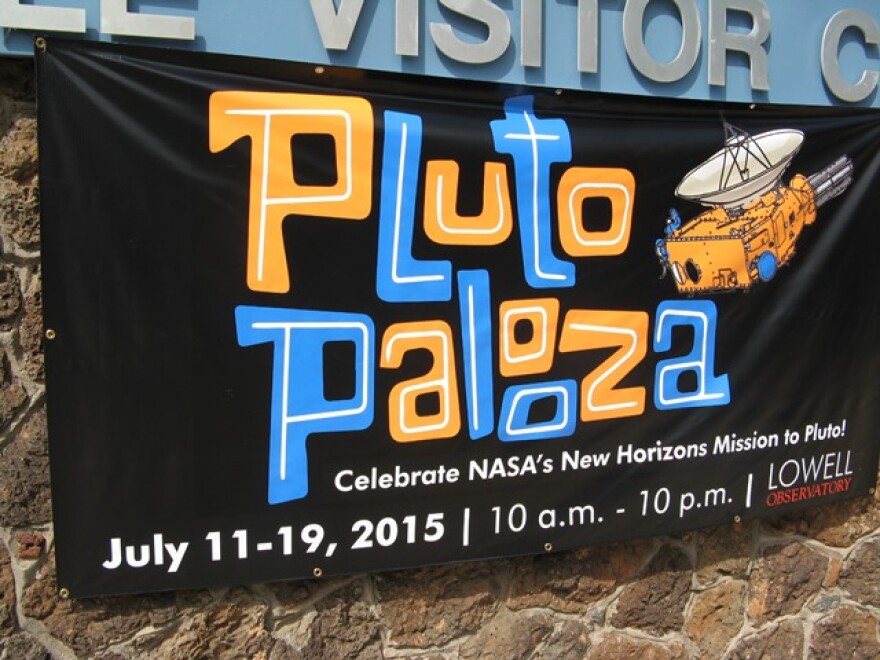Tomorrow NASA’s New Horizons spacecraft will make its closest approach to Pluto and collect the first-ever close-up images of the dwarf planet. In Flagstaff, where Pluto was discovered, scientists will be waiting to analyze those photographs and other data. But they’re not the only ones. Artists are creating their own interpretations of Pluto, and they’ll use New Horizons for inspiration.
It’s sweltering in George Averbeck’s glassblowing studio in downtown Flagstaff. He’s created an entire solar system in his furnace. It’s made out of colorful blown glass spheres, about the size of Christmas ornaments.
Averbeck works with fire, but spends a lot of time thinking about ice—because his muse, Pluto, is cold, dark, and far away.

“I thought about what something would look like if it’s frozen,” Averbeck says. “It might be kinda of pinkish, it might be kinda beige, it might be kinda grey. I have some glass colors that might resemble ice.”
Or they might not—because he doesn’t know what Pluto looks like yet. Nobody does, not even the scientists at Lowell Observatory who have studied Pluto for decades.
“I call up there, you got a color yet? Got a color yet?” Averbeck says. “And they’re like, ‘George, we’re not really going to know until July.’ I’m just going, whoa!”
New Horizons has spent nine years in space to reach this moment. Flagstaff is celebrating tomorrow’s closest approach with parties and telescope viewings. Even bars and restaurants are coming up with Pluto-themed cocktails, appetizers and coffee drinks.

Ceramic artist Paula Rice has her own Pluto project underway. “I think that the way I feel about the universe is the way everybody feels about it,” Rice says. “We want some kind of connection with it, a human connection actually.”
Rice’s studio is cluttered with jars of colored glazes, ceramic tiles and stacks of planetary science books. She’s already made nine sculptures inspired by the planets. After tomorrow’s images, she plans to create another one that puts a personality on New Horizons’ findings.
“I thought of Pluto in the most emotional sense as a small figure, lonely and far away and maybe a little lost,” Rice says.

But tomorrow Pluto will have a lot of company as the world waits for New Horizons.
“When it sends that quintessential image, the closest pictures back, I think no matter where you are, it’s going to be this surge, this thrill: That’s it!” says Kevin Schindler, communications specialist at Lowell Observatory, where Pluto was discovered in 1930.
Schindler believes art and science are a natural fit in Flagstaff. “Our scientists are some of the biggest fans of the artists,” he says. “And every time we all get together, it’s a real vibrant conversation between the sciences and the arts. If you have one without the other it feels kind of empty. But having them both is very satisfying and we just have that in Flagstaff.”

After tomorrow, spacecraft missions will have visited all nine of the classical planets. Scientists will exponentially increase their knowledge of Pluto’s geology and atmosphere—and have a good idea of what it really looks like, which means that artists like Paula Rice and George Averbeck can finally complete their visions of the solar system.







